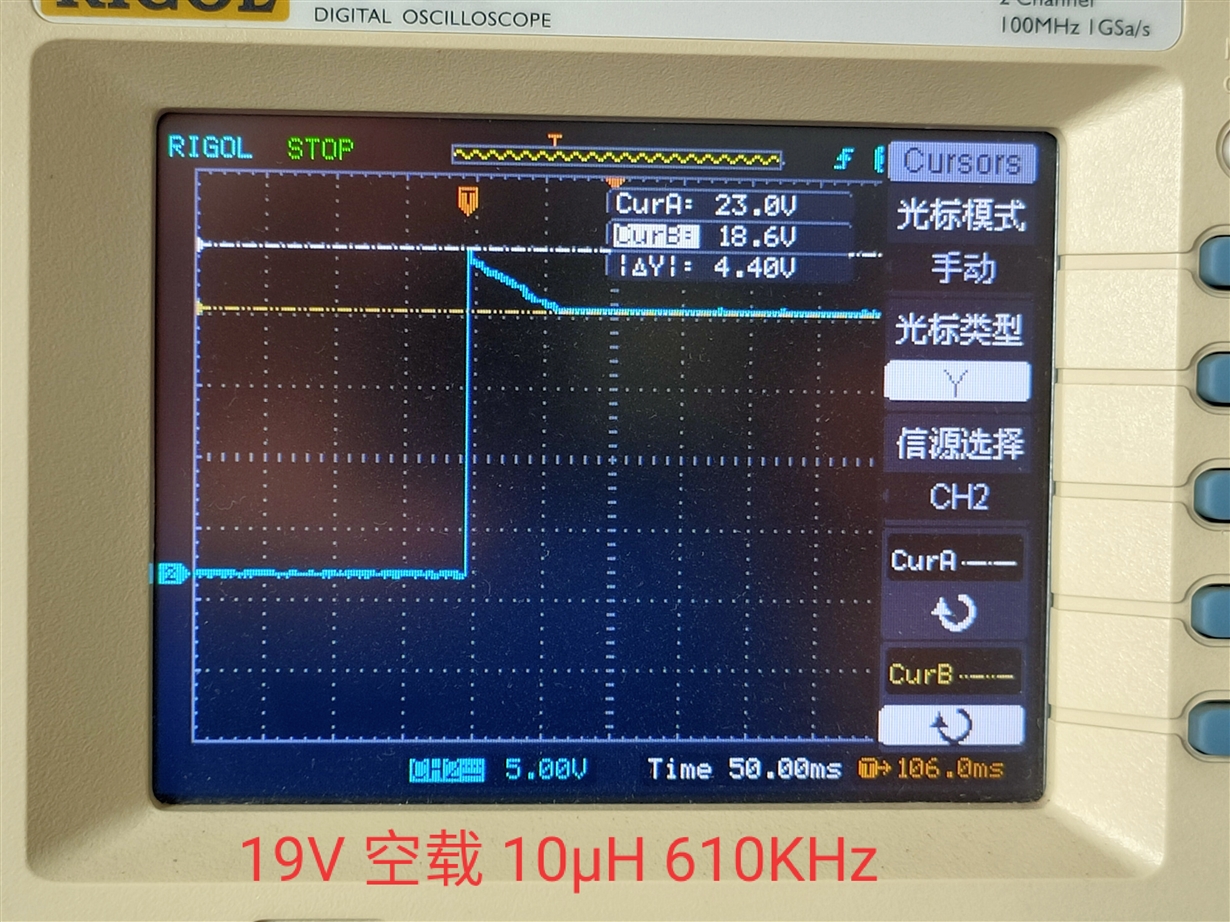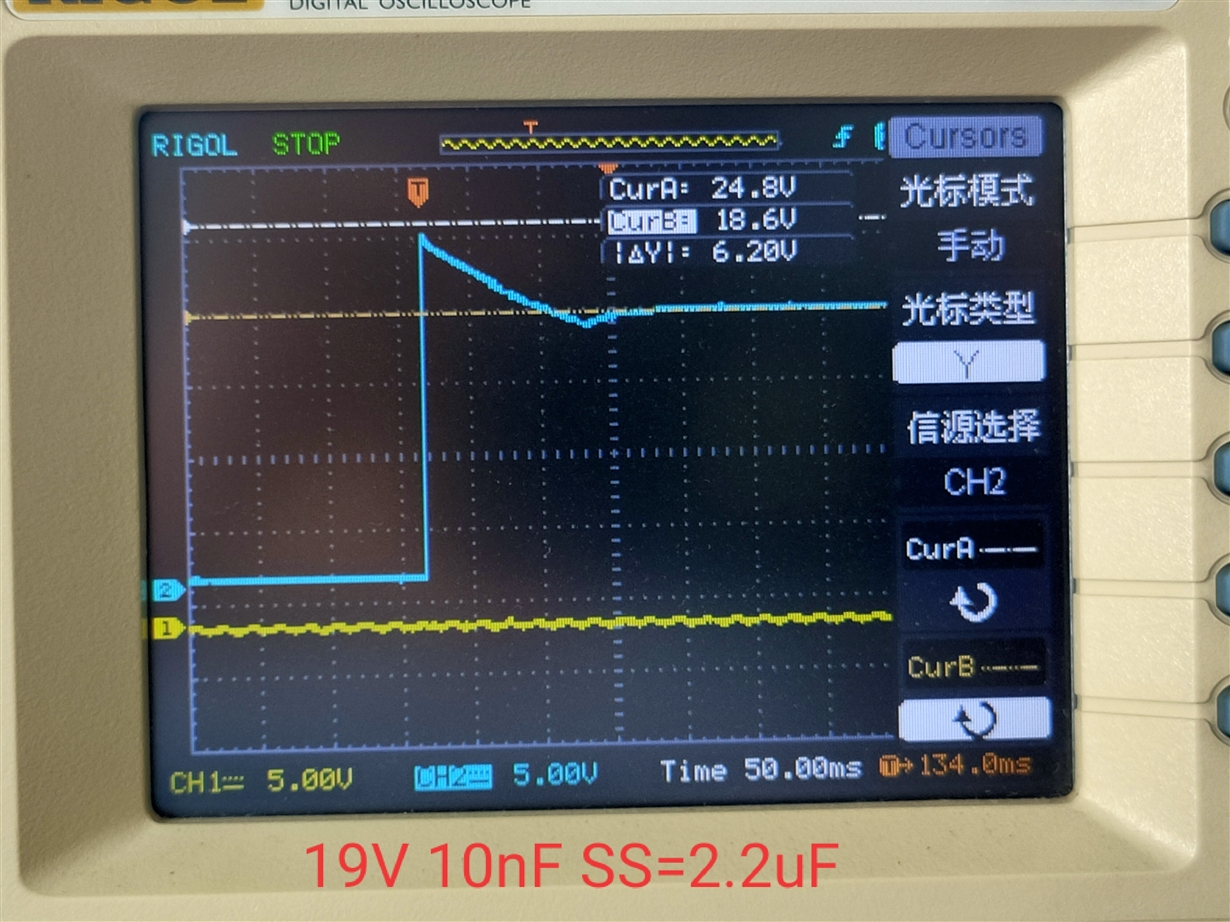Other Parts Discussed in Thread: TPS61175, LM5121
1. When I use TPS55340 or TPS61175, (12V->19V), an output voltage overshoot at no load condition.
2.Changing the inductor to a smaller one(22uH -> 6.8uH). this removes the overshoot .
3. Changing CSS can't eliminate overshoot,I feel that the soft start has no effect
How to eliminate overshoot?






